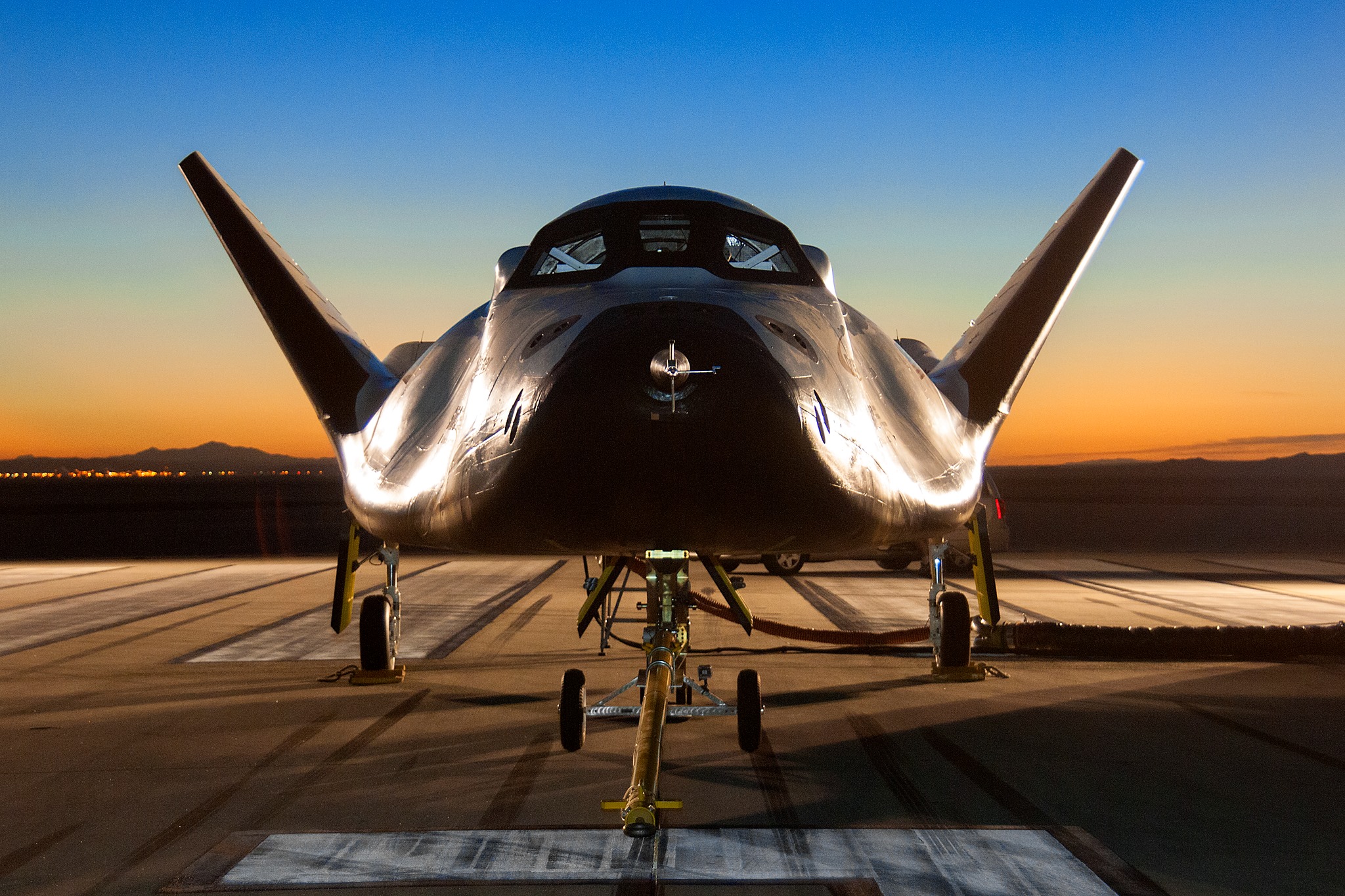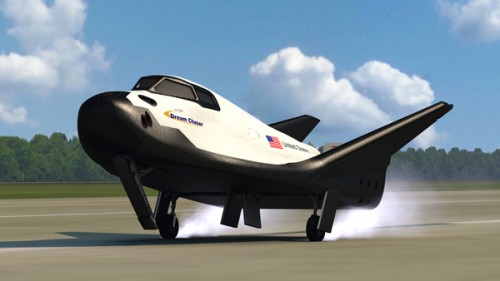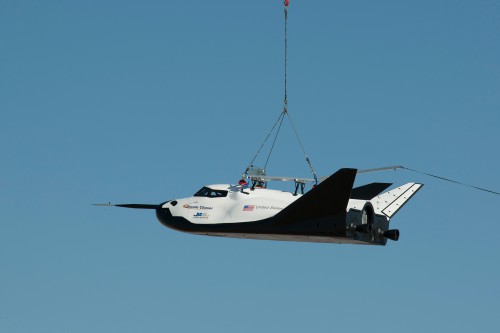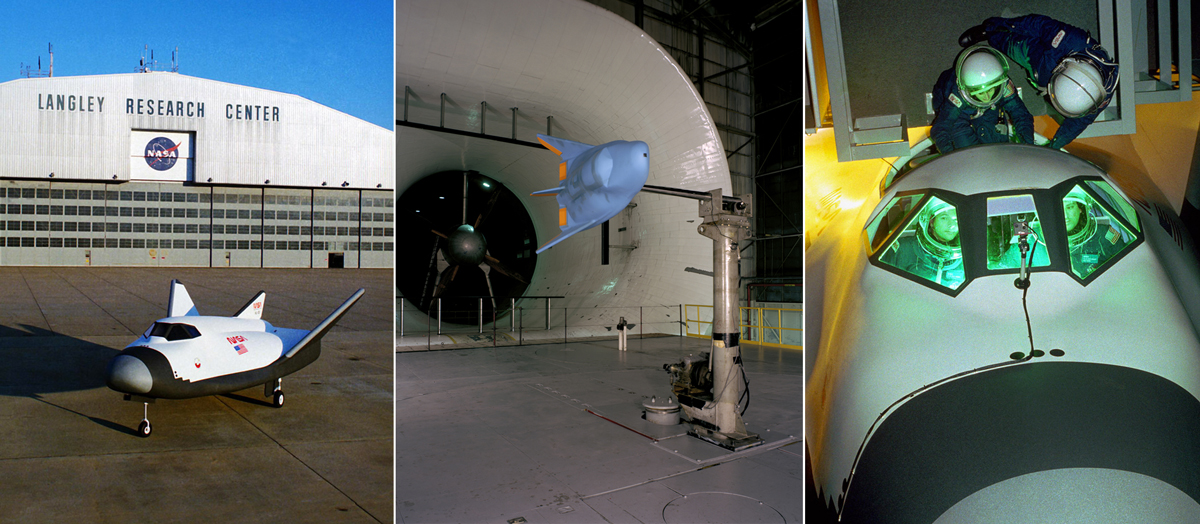
Sierra Nevada Corporation (SNC), the company developing the Dream Chaser spaceflight vehicle, is back on track to conduct a series of Approach and Landing tests (ALT) after the government shutdown halted work at NASA’s Dryden Flight Research Center in California earlier this month. With the shutdown now over, work has resumed to complete pre-flight qualifications and final preparations for the ALT tests, a major milestone in the development of America’s next winged, reusable human spacecraft.

“The flight test schedule did incur some delays due to the government shutdown, the Dream Chaser® spacecraft was originally slated to complete the first free flight approach and landing test in early October 2013,” said John Curry, Senior Director of the Dream Chaser program. “With the re-opening of the U.S. government the team can continue to work collaboratively with the NASA Dryden and Edwards Air Force base partners to prepare for this important test. Now that work has resumed the team is eager to complete pre-flight qualifications and final preparations for the ALT.”
The upcoming free-flight ALT tests represent a critical milestone in Dream Chaser’s development as SNC works to become the next commercial company to provide NASA crew transport capabilities to low-Earth orbit (LEO) and the International Space Station (ISS). The Dream Chaser, described by many simply as a “mini space shuttle,” is a lifting body human spacecraft designed to carry as many as seven astronauts, and it is the only spacecraft under the Commercial Crew Development Round 2 (CCDev2) agreement with NASA’s Commercial Crew Program (CCP) that is winged and designed to land on any conventional runway capable of handling commercial traffic.
“Despite the schedule delays incurred due to the government shutdown SNC expects to resume normal operations after conducting several follow up tests to ensure the spacecraft is flight ready,” added Curry. “The approach and landing test is now scheduled to be complete by the end of the year.”

On Aug. 22, 2013, the Dream Chaser test vehicle was put through its second captive-carry test flight, being carried to a maximum altitude of 12,400 feet by an Erickson Air-Crane helicopter over the dry lake bed of Edwards Air Force Base—the same place where the ALT tests will be conducted. Dream Chaser was flown a distance of three miles along the same projected path it is expected to fly when the time comes for the free flight tests. The spacecraft’s flight computer, guidance, navigation, and control systems were all tested in flight, and its landing gear and nose skid were also deployed, proving the hardware is ready for free flight.
The success of that second captive-carry test flight, which was the first time a fully functional Dream Chaser flight vehicle was ever flown, came on the heels of a series of successful ground-tow tests that took place last summer as well. Those tests, which were also performed at Dryden, were conducted four times over the course of two months to prove Dream Chaser’s braking and landing systems are ready for the upcoming flight tests. The team put their vehicle through comprehensive integrated testing on the runway, ramps, and hangar, finding issues on the ground and addressing them in preparation for upcoming free flights. A pick-up truck pulled the Dream Chaser flight test vehicle through several low and high-speed tow tests on Dryden’s concrete runways at 10, 20, 40, and 60 mph. Those tests helped verify the integrity of the vehicle, proving it can perform as expected under landing and rollout conditions. Teams also conducted vehicle flight verifications on Dream Chaser’s flight computer and flight software, instrumentation, guidance, navigation and control, and remote commanding capability—among others.
“These initial flight tests are unpiloted such that the guidance navigation and control is flying into the runway automatically based upon data collected by the Dream Chaser® sensors and flight computer,” added Curry. “The Dream Chaser® aerosurfaces do the job of flying the spacecraft on the proper trajectory into the runway. These initial ALT tests exactly replicate the orbital re-entry flight path from 5000 feet altitude to the Edwards 22L runway landing. This includes final flare and landing gear deployed before touchdown.”
http://youtu.be/i7yPVaNdGBw
WATCH! DREAM CHASER NEW CONCEPT OF OPERATIONS
VIDEO CREDIT: SNC SPACE SYSTEMS
“It’s part of the aerodynamics that we don’t have great confidence in from the analysis that we have done, because usually wind tunnel work is not particularly good at the lower speeds and with landing gear deployed, so we need to do a flight test to get that aerodynamic data,” said former astronaut and SNC Space Exploration Systems Vice President James Voss in 2012.
“NASA Langley did a lot of research on the vehicle in the 80′ and 90’s, based off a Russian heritage design called the Bor 4. They did wind tunnel analysis, a lot of computational fluid dynamics analysis, and they did simulations with it,” added Voss. “They created the control laws to be able to fly it and had a lot of astronauts come in to try it and fly it, so they did thousands of hours of work on it. When our company (SNC) decided to pick up a vehicle to be in using we thought it was not very smart to start with a clean sheet of paper, but lets use something NASA has already put a lot of effort and research into. So we took the basic design and we changed it only slightly.”
Above: NASA’s HL-20 at NASA’s Langley Research Center. The left image shows the HL-20 in front of the hangar at Langley, the center image shows the HL-20 undergoing testing for forced oscillation in pitch, and the right image shows people going through a series of tests to simulate launch and landing attitudes, crew seating arrangements, habitability, ingress and egress, equipment layout, maintenance and handling operations and visibility requirements during docking and landing operations.
Photos Credit: NASA
NASA was looking for a spacecraft to use as a return vehicle from the ISS, so the agency competed a couple of different designs for rescuing crews in case of an emergency. One design was the X-38, the other was the HL-20 – which is now the Dream Chaser. NASA eventually decided to choose the X-38, but after working on that for several years the X-38 was abandoned also, leaving astronauts to rely exclusively on the space shuttle and Russian Soyuz as the emergency vehicles for the ISS.
“The Dream Chaser® Program has been approved for a robust set of flight tests after these initial ALT tests are complete,” said Curry. “The Dream Chaser® flight vehicle will be returned to SNC’s Colorado facility and be retrofitted for piloted flight testing. Simultaneously, we are currently in active build with our strategic partner Lockheed Martin of the Dream Chaser® orbital vehicle in the next phase of NASA’s Commercial Crew Program (CCP). The flight test program includes both crewed and uncrewed missions, which will be a part of the CCP next phase.”
No date has been announced for the first ALT tests since the ending of the government shutdown, as SNC does not typically release any flight test date information – anything else is speculation. “We want to do another captive carry to check on a couple of things and then drop the next Saturday after that,” said Curry.
Dream Chaser could fly anytime between now and New Years, we’ll just have to wait and see.

Late this summer NASA amended SNC’s Dream Chaser Space Act Agreement (SAA) to include two additional, optional milestones in the development of Dream Chaser, adding $15 million to the value of SNC’s Commercial Crew Integrated Capability (CCiCAP) initiative, which now totals $227.5 million. The additional milestones will help fund work associated with the Critical Design Review (CDR) for SNC’s Dream Chaser Space System and will allow for additional testing of the vehicle’s reaction control system. The addition of both milestones to SNC’s CCiCap SAA also extends the company’s performance period from May 2014 to August 2014.
When ready, Dream Chaser will launch atop a human-rated United Launch Alliance Atlas-V 402 rocket, with a fleet of Dream Chasers based out of Florida’s historic launch sites at Kennedy Space Center and Cape Canaveral Air Force Station. Dream Chaser will have no abort blackout zones and will have a 3.5 day free flight capability—with the added benefit of deorbiting at any time (since Dream Chaser can land on any conventional runway). The spacecraft will also be able to stay at the ISS for up to seven months at a time, if needed, before having to return to Earth. An expected 1.5 G nominal reentry will provide ideal conditions for returning fragile cargo and science experiments, in addition to making the return to gravity easier on the crew (SNC expects immediate access to crew and cargo upon landing). A quick turnaround and an almost entirely reusable vehicle are two of Dream Chaser’s main selling points.
Sierra Nevada is one of several companies currently competing to develop commercial crew transportation capabilities in cooperation with NASA, with the goal of achieving safe, reliable, and cost-effective access to and from low-Earth orbit (LEO) and the ISS.
For more information on Sierra Nevada and Dream Chaser visit their website at www.snccorp.com, and don’t forget to LIKE Sierra Nevada on Facebook!
Want to keep up-to-date with all things space? Be sure to “Like” AmericaSpace on Facebook and follow us on Twitter: @AmericaSpace




